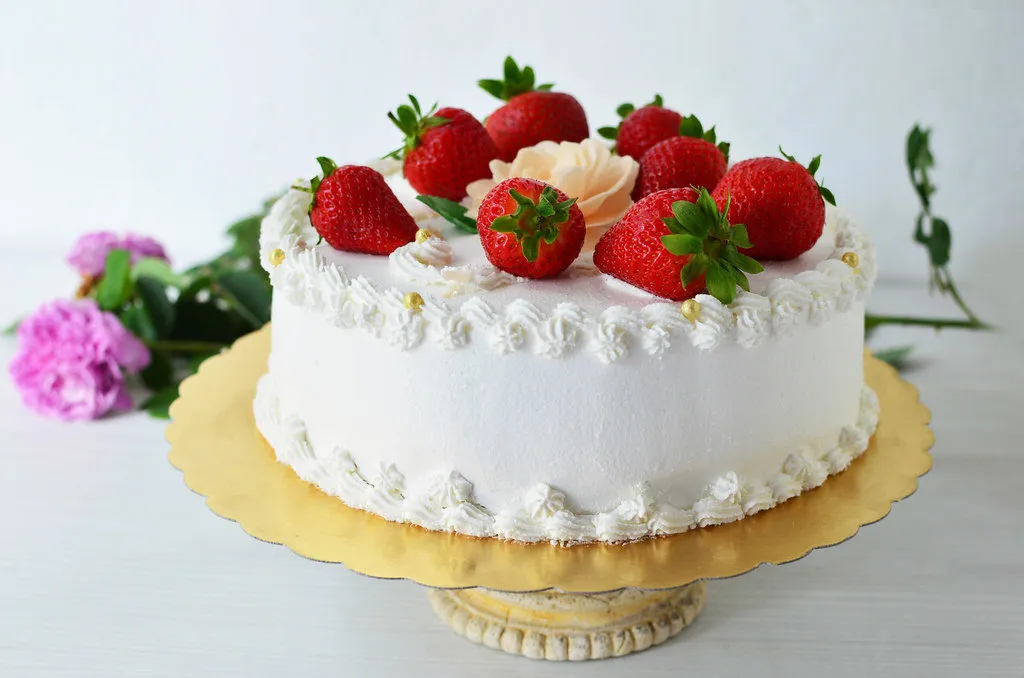The Best Fluffy Pancakes recipe you will fall in love with. Full of tips and tricks to help you make the best pancakes.
Looking for a showstopping dessert that’s rich, moist, and full of irresistible flavor? This Classic Italian Cream Cake is just what you need! With its tender vanilla layers, sweet shredded coconut, crunchy pecans, and tangy cream cheese frosting, it’s a Southern favorite that never goes out of style. Despite its name, this beloved cake isn’t traditionally Italian—it’s a vintage American recipe that’s won hearts at birthdays, holidays, and family gatherings for generations.
Whether you’re baking it for the first time or bringing back sweet memories, this step-by-step guide will help you make the perfect Italian cream cake from scratch—with helpful tips, classic ingredients, and simple instructions you’ll love.
What Is Italian Cream Cake?
Despite its name, Italian Cream Cake isn’t actually from Italy—it’s a rich, decadent dessert that has deep roots in the Southern United States. The origin of its name is somewhat of a mystery, but it’s widely believed that the cake gained popularity in American kitchens during the mid-20th century and has since become a beloved staple at weddings, birthdays, and holiday gatherings.

This cake is known for its unique combination of flavors and textures. The batter is rich and buttery, made even more tender with the addition of buttermilk, which adds a subtle tang and softness. What sets this cake apart is the addition of shredded coconut and chopped pecans, which are folded into the batter to give every bite a perfect balance of chew and crunch.
Another standout feature is the cream cheese frosting—a smooth, sweet, and slightly tangy topping that perfectly complements the nutty, coconut-infused cake layers. Together, these ingredients create a dessert that’s flavorful, moist, and absolutely unforgettable.
Whether you consider it a Southern classic or a vintage crowd-pleaser, Italian Cream Cake is a must-try for anyone who loves rich layer cakes with a touch of nostalgia.
Ingredients You’ll Need for a Classic Italian Cream Cake
Making an authentic Italian Cream Cake starts with a handful of pantry staples and a few special ingredients that give this dessert its signature flavor and texture. Here’s a breakdown of everything you’ll need:
Dry Ingredients
- All-Purpose Flour: The foundation of the cake, giving it structure while keeping it soft and tender. Be sure to measure it correctly to avoid a dense texture.
- Granulated Sugar: Sweetens the cake and helps it brown beautifully while baking.
- Baking Soda: Acts as the leavening agent, especially important when combined with acidic buttermilk for a light, fluffy crumb.
- Salt: Enhances the overall flavor and balances the sweetness.
Wet Ingredients
- Unsalted Butter (softened): Adds richness and depth; creaming the butter with sugar creates an airy base for the batter.
- Eggs: Provide structure, moisture, and help bind the ingredients together.
- Buttermilk: A key ingredient that adds a subtle tang while keeping the cake moist and tender.
- Vanilla Extract: Adds warm, aromatic flavor that ties all the ingredients together.
Special Add-Ins
- Shredded Sweetened Coconut: Gives the cake its signature chewy texture and tropical flavor. Use sweetened coconut for the best balance.
- Chopped Pecans (toasted for extra flavor): Add a satisfying crunch and nutty richness to each bite. Toasting them briefly enhances their natural oils and deepens the flavor.
For the Frosting
- Cream Cheese (softened): The base of the classic frosting—smooth, tangy, and rich.
- Unsalted Butter: Adds creaminess and structure when whipped with the cream cheese.
- Powdered Sugar: Sweetens the frosting and gives it a silky finish.
- Vanilla Extract: Enhances the cream cheese flavor and rounds out the sweetness.
Optional: You can also reserve extra chopped pecans and coconut flakes for garnishing the frosted cake for a beautiful and flavorful finish.
How to Make Italian Cream Cake from Scratch (Step-by-Step)
Making a homemade Italian Cream Cake may sound fancy, but it’s actually very manageable—even if you’re not a seasoned baker. Follow these simple steps to get the perfect moist layers packed with coconut and pecans, all topped with creamy frosting.
Step 1: Prep Your Pans and Oven
Before mixing anything, start by preheating your oven to 175°C (350°F). Grease and flour three 8-inch or two 9-inch round cake pans, then line the bottoms with parchment paper for easy release. This will ensure your cakes don’t stick and come out evenly baked.
Step 2: Cream the Butter and Sugar
In a large mixing bowl, use a stand mixer or handheld mixer to cream together:
- 1 cup (226g) unsalted butter, softened
- 2 cups (400g) granulated sugar
Beat for 3–4 minutes until the mixture is light and fluffy. This step adds air to the batter and gives your cake a tender texture.
Step 3: Add Eggs One at a Time
Crack in 5 large eggs, one at a time, beating well after each addition. This ensures your batter stays smooth and emulsified. Scrape down the sides of the bowl as needed to keep everything well combined.
Step 4: Mix in Buttermilk and Vanilla
In a separate bowl, combine your dry ingredients:
- 2 cups (250g) all-purpose flour
- 1 teaspoon baking soda
- 1/2 teaspoon salt
In a measuring cup, combine the wet ingredients:
- 1 cup (240ml) buttermilk
- 1 teaspoon vanilla extract
With your mixer on low speed, alternate adding the dry ingredients and buttermilk mixture to the batter—starting and ending with the dry ingredients. Mix just until incorporated. Don’t overmix, or the cake can become tough.
Step 5: Fold in Coconut and Pecans
Using a spatula, gently fold in:
- 1 cup (75g) sweetened shredded coconut
- 1 cup (120g) chopped pecans
This adds texture and flavor throughout the cake without deflating the batter. Be careful not to overwork it at this stage.
Step 6: Divide and Bake
Pour the batter evenly into your prepared pans and smooth the tops. Bake for 25–30 minutes, or until a toothpick inserted into the center comes out clean and the tops are lightly golden. Rotate the pans halfway through baking for even results.
Step 7: Cool Completely
Let the cakes cool in the pans for about 10–15 minutes, then carefully remove them and transfer to a wire rack to cool completely before frosting. Cooling the cake fully helps prevent the frosting from melting or sliding.
Make the Cream Cheese Frosting & Assemble the Cake
No Italian Cream Cake is complete without its rich and tangy cream cheese frosting. It’s smooth, fluffy, and perfectly complements the nutty sweetness of the cake layers. Here’s how to make it and assemble your cake like a pro.
Step 1: Make the Cream Cheese Frosting
In a large mixing bowl, beat together the following until smooth and creamy:
- 225g (8 oz) cream cheese, softened
- 115g (1/2 cup) unsalted butter, softened
- 1 tsp vanilla extract
Once combined, gradually add 3–4 cups of powdered sugar, one cup at a time, beating well after each addition. You can adjust the amount of sugar depending on your desired sweetness and consistency. The frosting should be thick yet spreadable—if it’s too loose, chill it for 10–15 minutes before using.
Step 2: Trim and Level the Cake Layers (Optional)
If your cake layers domed during baking, use a serrated knife to gently level the tops. This helps the cake stack evenly and prevents it from sliding once frosted.
Step 3: Assemble the Layers
Place one cake layer on a cake stand or serving plate, then spread a generous layer of cream cheese frosting on top using an offset spatula. Repeat with the second (and third, if using) layer. Apply a thin crumb coat (a light layer of frosting that traps any loose crumbs) over the entire cake.
Chill the cake for 15–20 minutes to set the crumb coat before applying the final, thicker layer of frosting.
Step 4: Decorate and Garnish
Once the final coat of frosting is on, it’s time to make it beautiful. Here are a few decoration ideas:
- Toasted pecans: Sprinkle chopped or whole pecans on top for extra crunch and visual appeal.
- Shredded coconut: Lightly press coconut flakes into the sides or top of the cake.
- Piping swirls: Use a piping bag to add rosettes or decorative edges.
- Dusting of powdered sugar: For a light, elegant finish.
Refrigerate the cake for at least 30 minutes before slicing to make cutting easier and cleaner.
Tips, Variations, and Serving Ideas
Whether it’s your first time baking Italian Cream Cake or you’re looking to elevate it to the next level, these tips, creative twists, and serving suggestions will ensure your cake is not only delicious—but unforgettable.
Baking Tips for Success
- Bring Ingredients to Room Temperature: Softened butter, cream cheese, and eggs mix more smoothly, resulting in a fluffier batter and creamier frosting.
- Don’t Overmix: Once you add the flour and buttermilk, mix just until combined. Overmixing can lead to a dense, tough cake.
- Use Fresh Baking Soda: This ensures your cake rises properly. If it’s expired, your layers might turn out flat.
- Toast the Pecans: A quick toast in the oven (about 5 minutes at 175°C/350°F) enhances their natural flavor and adds a delicious crunch.
Flavor Variations to Try
- Add Crushed Pineapple: Mix in 1/2 cup of well-drained crushed pineapple for a tropical twist and extra moisture.
- Swap Nuts: Try walnuts or almonds in place of pecans for a new flavor profile.
- Add a Citrus Note: Stir in some lemon or orange zest to brighten the flavor and balance the richness of the frosting.
- Coconut Cream Filling: Add a layer of coconut pastry cream or coconut whipped cream between the layers for added decadence.
Serving Ideas and Occasions
- Perfect for Celebrations: Italian Cream Cake is ideal for birthdays, anniversaries, Easter, Christmas, or any special gathering.
- Serve with Fresh Fruit: A side of strawberries or raspberries adds freshness and a pop of color.
- Pair with Coffee or Tea: Its richness pairs beautifully with a strong espresso, cappuccino, or Earl Grey.
- Mini Italian Cream Cupcakes: For a party-friendly twist, make individual cupcakes using the same batter and frost with a piping bag.
Storage Tips
- Refrigerate: Because of the cream cheese frosting, store your cake in the refrigerator for up to 5 days, covered to prevent it from drying out.
- Freeze: You can freeze unfrosted layers for up to 2 months—wrap them tightly in plastic and foil. Frosting can also be frozen separately.
- Bring to Room Temp Before Serving: Let the cake sit out for 30–60 minutes before serving so the frosting softens and the flavors shine.





